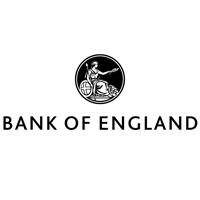You will, of course, know that the Bank of England raised interest rates at its postponed September meeting on Thursday, taking the Bank Rate to 2.25%, its highest level since 2008. This had been widely expected and the only surprise was that the rate rise was not higher given that both the Federal Reserve in the US and the European Central Bank had both increased their base rates by 0.75% earlier in the month (note, however, that the ECB rates are still lower than the UK.
The voting pattern was interesting with only 5 members of the Monetary Policy Committee (MPC) voting in favour of the 50 basis points rise; of the others, one voted for a 25 points increase and three for a rise of 0.75%.
Two other points to highlight from the MPC statement. Inflation is now expected to peak at just under 11% in October when the revised energy price cap comes into effect – this is lower than previously predicted, mainly as a result of the way in which the government has decided to offer support to consumers (inflation is generally measured using the Consumer Price Index so the support for businesses won’t affect this headline). The other point to note – indeed, this grabbed most of the headlines – is that the MPC now expect UK GDP to fall marginally in the 3rd quarter which, assuming that the Q2 figure of -0.1% is not revised up, would mean that the UK is in recession, albeit a very shallow one for the time being at least.
While this rise in interest rates is badged as being to reduce inflation, the external nature of much of this means that domestic policy is unlikely to have much impact. Indeed, the unspoken reason for raising interest rates is likely to be more useful; with the US raising interest rates, the GB£ has weakened significantly which has the effect of raising the cost of imports which in turn, then feeds through into higher prices for food and other consumer goods. Raising UK interest rates should help to stop Sterling getting any weaker although there is little evidence that it has reversed its recent decline.
One of the documents released in support of this MPC meeting was the Bank’s Agents’ Summary of Business Conditions which is compiled from the 12 regional offices on the basis of their meetings with business. In it, they noted that growth in manufacturing output has slowed as demand has weakened and that while supply constraints continue to limit production, this has eased compared to recent months.
The fall in output is mainly in consumer goods where demand has fallen but they also note a slowdown for some types of capital goods, including mining and construction machinery which reflects higher operating costs and heightened uncertainty. On the other hand, a number of sectors, including engineering and suppliers of products for infrastructure, said that demand remained strong.
Investment intentions have eased due to the uncertain economic outlook but remain positive with contacts reporting that they were continuing to invest in improving IT and automation and on energy saving measures. A negative factor is that some companies reported that they have completed investment projects that were delayed during the pandemic and are returning to more normal levels of spending.
You can find out more from the minutes of the MPC meeting which are published on the Bank’s website at https://www.bankofengland.co.uk/monetary-policy-summary-and-minutes/2022…, with the Agents’ Business Summary available at https://www.bankofengland.co.uk/agents-summary/2022/2022-q3.

